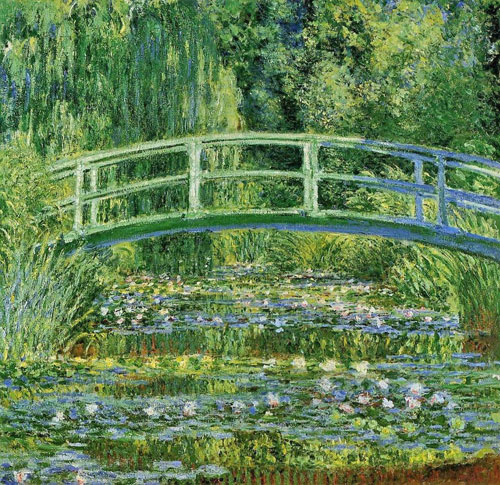Today, artists such as Vincent Van Gogh, Pierre-August Renoir, Édouard Manet, Edgar Degas, Berthe Morisot, Edvard Munch and Piet Mondrian are recognized, even revered and considered the great Classics
of art, but it was not always the case. At the beginning of their careers, especially when some of them exhibited their work grouped in the collective Sociedad Anónima of painters, sculptors and recorders, were called rebels and were relegated. However, at the time they broke with tradition both in the techniques they used and in the themes they painted, as well as in the ways in which they exhibited their works.
It is that character of rebellion that intends to recover The Impressionist Revolution: From Monet to Matisse of the Dallas Art Museum (Mad), exhibition of 45 works, between painting and sculpture, which tomorrow will open to the public at the Museum of the Palace of Fine Arts. Has its origins in the sample The Impressionist Revolution from Monet to Matisse, Exhibited last year in that Texan enclosure, on the occasion of the sesquicentennial of the impressionist movement, ephemeris held in different parts of the world.
The original exhibition had 90 works, most from the MAD’s collection, hence the pieces that travel to Mexico are from the rich impressionist art collection hosted in that Texan enclosure. These are the paintings of the artists mentioned above, as well as Claude Monet, Pierre Bonnard, Camille Pissarro, Alfred Signac, André Derain and Gustave Caillebotte, among others.
In 1874, the newly founded corporation of painters, sculptors and recorders managed to organize an exhibition in the halls of photographer Gaspard-Félix Tournachon, known as swimming. It was the first of eight collective samples carried out over 12 years until 1886. The participants in each exhibition were changing; Beyond sharing a rejection of traditional art, their themes and ways of working also vary. What unified these independent artists, now called impressionists, were their desire to exhibit publicly.
The only way to do it in the Paris of the nineteenth century, and for living artists, was at the Academy of Fine Arts, organized and legislated by the State. The artists who depart from the academic tradition often experienced rejection, while running out of paths to harvest critical and financial success.
When organizing their exhibitions, the impressionists avoided the official system, an act of entrepreneurship, although also of rebellion.
In the first exhibition of the group, 39 painters participated, among whose works it was Printing: rising sun (1872), by Claude Monet – also developed the concept of the series. The title of this painting raised mockery of art critic Louis Leroy, but also gave name to the group. The painting represents the port of Le Havre where the Seine river flows.
Apart from conceptual and stylistic, the impressionist renewal was also technical. In addition to breaking the classic representation modes based on perspective, loyalty to the real model and the idealization of forms, he focused on capturing light, color and movement as they were perceived by the artist in a certain moment.
In The impressionist revolution … The innovations of its main members, including Monet, Degas and Berthe Morisot, are put in the candlestick along with the responses of successive generations of avant -garde artists, from Paul Gauguin and Van Gogh, to Mondrian and Henri Matisse.
Nicole R. Myers, curator of the exhibition, raised from the beginning to go beyond the origins of the impressionist movement and review its impact on its avant -garde contemporaries and in which they came later, a subject less familiar
.
The DMA expert has expressed that impressionism usually separates from the explosion of the different modernisms that proliferated at the end of the 19th and early twentieth centuries. Suggests that the most radical innovations of the impressionists; That is, its brilliant, antiantinaturalist palette, semi -abstract applications of painting, and fixing to show the experience of modern life, have ended in 1900, at which time the art world turned towards something completely new
.
The process, however, is more complex. Artistic movements are rarely unfold in straight lines, which leads to the other, according to an orderly chronology. Monet, Degas, Renoir and Mary Cassatt lived to see the development of new avant -garde styles, such as Cubism and Fauvism, whose roots come from the revolution that began with their peers 40 years before
.
The exhibition is divided into four thematic nuclei whose objective is to guide the visitor through the transformation of impressionism and its impact on modern art. The modules are rebels with cause, field notes, side effects and forever.
With the purpose of receiving this plethora of artists, and his works, the Museum of the Palace of Fine Arts concluded, among other things, a cleaning process in his candiles, each with an approximate weight between three and four tons. This work modified the tone and lighting of the room, in order to improve the perception of the space and experience of visitors.
The Impressionist Revolution: From Monet to Matisse of the Dallas Art Museum It will be exhibited from tomorrow until July 27 at the Museum of the Palace of Fine Arts.
On the day of the opening at 6 pm a curatorial talk will be held in the area of murals with Nicole R. Myers, moderated by Joshua Sánchez.
